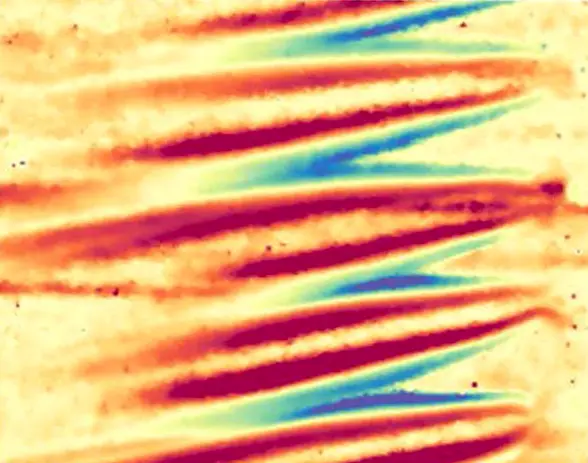A SKIN-FRICTION ESTIMATION METHOD BASED ON TIME-RESOLVED TEMPERATURE SENSITIVE PAINT DATA

PhDAER Seminar
November 7, 2025, from 14:30 until 16:00 - Sala Consiglio DAER, Building B12, 2nd Floor, Politecnico di Milano, Campus Bovisa, Via la Masa 34, Milano
There are at least two direct links between the friction acting on the surface of a slightly warmer or colder body under the influence of a surrounding flow and the temperature distribution on the surface of the body itself.
The first is the so-called Reynolds' analogy, which uses the energy equation to connect the thermal and momentum boundary layers by ascribing the evolution of the temperature distribution at the wall to the action of the skin-friction vector field.
On the other hand, a relaxation of the frozen turbulence condition at the wall leads to an intriguing derivation of the Taylor Hypothesis, which provides an operative tool for evaluating the skin friction based on the direct relationship between the celerity of thermal blob propagation and the friction velocity.
The measurement of friction velocity and skin friction brings a meaningful description of the vorticity generation due to the interaction of the flow field with the body's surface.
Moreover, the point of view from the surface allows for a deeper understanding of the onset of flow separation and reattachment in regions where the flow topology significantly alters the boundary layer paradigm.
The seminar:
The seminar will reports on the theoretical connection between the celerity of passive displacement of temperature disturbances at the wall and skin friction. It's going to be discussed the accuracy and critical issues of the method by illustrating some of its most recent applications.
Among them will be considered results about the case of a NACA 0015 hydrofoil placed in a steady crossflow and in the wake of a marine propeller, a cube pierced at the wall in a turbulent boundary layer, and the preliminary results of the first application of the proposed approach to the study of the flow around a naval model in a recirculating tank.
Speaker:
Massimo Miozzi, Ph.D., is a senior researcher at the Institute of Marine Engineering CNR-INM (ex INSEAN) in Rome, Italy. His research areas cover experimental and applied hydrodynamics and theoretical hydrodynamics models.
He contributed to the development of image-analysis algorithms for kinematic quantities measurements in single and multiphase flows, and the skin-friction direct estimation through the measurement of surface temperature via Temperature-Sensitive-Paint.
Main topics of application concern the study of the topology at the wall of attached and separated flows and associated themes, e.g. active and passive drag reduction, as well as transition and turbulence, among others. Other topics of interest focus on geophysical themes and include the experimental study of physical models of free-surface flows at a river mouth and the wave-excited marine coastal seabed dynamics.
Free admission, open to all members of the university community and the public, subject to availability.
--
24.10.2025